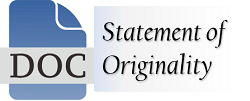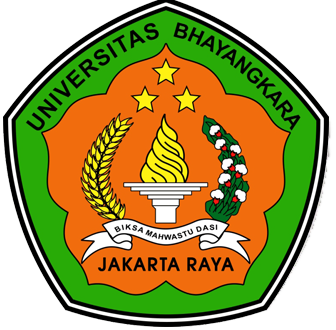Quantifying Coaching Considerations, Attitudes And Strategies To Player Substitutions In School Rugby Union
DOI:
https://doi.org/10.31599/zpwaxk43Keywords:
Interaction, Decision-Making, School Sports, Rugby Union FootballAbstract
Rugby is a high-intensity collision sport played by fifteen players in highly specialised playing positions. Due to these physical demands and to maintain a highly competitive level, a coach may substitute no more than eight players during the match. Player substitutions can affect the match’s outcome and knowing when to substitute players is largely determined by a coaches’ intuition. Therefore, the coaches’ involvements and decisions behind player changes must be assessed, as the effects of changing a player can directly affect the team’s performance. A six-sectioned questionnaire was developed to assess various issues surrounding player substitutions. Specifically, reasons for substituting players, considerations, informing players, match progression and status. Question responses followed a five-point Likert scale. Sixty-nine age-group level rugby coaches (experience 11.7 ± 9.0 years) completed the questionnaire. Common responses indicated that coaches used substitutions to increase their team’s chances of winning and to reduce player load. Additionally, the results indicate that coaches are likely to substitute players based on a predetermined strategy and to manage player loads. Coaches were likely to change players following a team scoring and as the game progressed. Additionally, substitutions were more likely when game importance increased. Finally, coaches frequently considered technical abilities of the players, timing and score of the game before changing players. The results provide a likely indication that coaches rely on their own previous playing experience regarding their decision-making approaches. Importantly, substitutions are planned and not reactive. Overall, coaches should provide sufficient notice and instruction to replacement players.
Downloads
References
Austin, D., Gabbett, T., & Jenkins, D. (2011). Repeated high-intensity exercise in professional rugby union. Journal of Sports Sciences, 29(10), 1105–1112. https://doi.org/10.1080/02640414.201 1.582508
Basson, J., van Deventer, K., & Kraak, W. (2017). A profile of mini rugby coaches in the Western Cape Province, South Africa. International Journal of Sports Science & Coaching, 13(1), 104–112. https://doi.org/10.1177/1747954117741256
Jones, M. R., West, D. J., Crewther, B. T., Cook, C. J., & Kilduff, L. P. (2015). Quantifying positional and temporal movement patterns in professional rugby union using global positioning system. European Journal of Sport Science, 15(6), 488–496. https://doi.org/10.1080/17461391.201 5.1010106
Kaya, A. (2014). Decision Making by Coaches and Athletes in Sport. Procedia - Social and Behavioral Sciences, 152, 333–338. https://doi.org/https://doi.org/10.1016 /j.sbspro.2014.09.205
Lacome, M., Piscione, J., Hager, J.-P., & Bourdin, M. (2014). A new approach to quantifying physical demand in rugby union. Journal of Sports Sciences, 32(3), 290–300. https://doi.org/10.1080/02640414.201 3.823225
Lacome, M., Piscione, J., Hager, J.-P., & Carling, C. (2016). Analysis of Running and Technical Performance in Substitute Players in International Male Rugby Union Competition. International Journal of Sports Physiology and Performance, 11(6), 783–792.https://doi.org/10.1123/ijspp.2015-
Lacome, M., Piscione, J., Hager, J.-P., & Carling, C. (2017). Fluctuations in running and skill-related performance in elite rugby union match-play. European Journal of Sport Science, 17(2), 132–143. https://doi.org/10.1080/17461391.201 6.1220986
Lupo, C., Ungureanu, A. N., Frati, R., Panichi, M., Grillo, S., & Brustio, P. R. (2020). Player Session Rating of Perceived Exertion: A More Valid Tool Than Coaches’ Ratings to Monitor Internal Training Load in Elite Youth Female Basketball. International Journal of Sports Physiology and Performance, 15(4), 548–553. https://doi.org/10.1123/ijspp.2019- 0248
Middlemas, S. G., Croft, H. G., & Watson, F. (2017). Behind closed doors: The role of debriefing and feedback in a professional rugby team. International Journal of Sports Science & Coaching, 13(2), 201–212. https://doi.org/10.1177/17479541177 39548
Morgan, K., Mouchet, A., & Thomas, G. (2020). Coaches’ perceptions of decision making in rugby union. Physical Education and Sport Pedagogy, 25(4), 394–409. https://doi.org/10.1080/17408989.202 0.1725458
Mouchet, A., & Duffy, P. (2020). Rugby coaches’ perceptions of their in- competition role. Sports Coaching Review, 9(1), 24–47. https://doi.org/10.1080/21640629.201 8.1532650Mouchet, A., Harvey, S., & Light, R. (2014). A study on in-match rugby coaches’ communications with players: a holistic approach. Physical Education and Sport Pedagogy, 19(3), 320–336. https://doi.org/10.1080/17408989.201 2.761683
Phibbs, P. J., Roe, G., Jones, B., Read, D. B., Weakley, J., Darrall-Jones, J., & Till, K. (2017). Validity of Daily and Weekly Self-Reported Training Load Measures in Adolescent Athletes. Journal of Strength and Conditioning Research, 31(4), 1121–1126. https://doi.org/10.1519/JSC.00000000 00001708
Quarrie, K. L., Hopkins, W. G., Anthony, M. J., & Gill, N. D. (2013). Positional demands of international rugby union: evaluation of player actions and movements. Journal of Science and Medicine in Sport, 16(4), 353–359. https://doi.org/10.1016/j.jsams.2012.08.005
Quarrie, K. L., Raftery, M., Blackie, J., Cook, C. J., Fuller, C. W., Gabbett, T. J., Gray, A. J., Gill, N., Hennessy, L., Kemp, S., Lambert, M., Nichol, R., Mellalieu, S. D., Piscione, J., Stadelmann, J., & Tucker, R. (2017). Managing player load in professional rugby union: a review of current knowledge and practices. British Journal of Sports Medicine, 51(5), 421–427. https://doi.org/10.1136/bjsports-2016- 096191
Sinulingga, A., Pasaribu, A. M. N., Bangun, S. Y., Ningrum, D. T. M., & Mahyudi, Y . V . (2023). Plyometric Exercise and Speed on the Power of Sabit Kick in Pencak Silat. International Journal of Human Movement and Sports Sciences, 11(3), 591–597. https://doi.org/10.13189/saj.2023.110 311
Till,K., Jones, B. L., Cobley, S., Morley, D., O’Hara, J., Chapman, C., Cooke, C., & Beggs, C. B. (2016). Identifying Talent in Youth Sport: A Novel Methodology Using Higher- Dimensional Analysis. PloS One, 11(5), e0155047. https://doi.org/10.1371/journal.pone.0 155047
Vaz, L., Hendricks, S., & Kraak, W. (2019). Statistical Review and Match Analysis of Rugby World Cups Finals. Journal of Human Kinetics, 66, 247–256. https://doi.org/10.2478/hukin-2018- 0061
Weakley, J. J. S., Read, D. B., Fullagar, H. H. K., Ramirez-Lopez, C., Jones, B., Cummins, C., & Sampson, J. A. (2020). “How Am I Going, Coach?”- The Effect of Augmented Feedback During Small-Sided Games on Locomotor, Physiological, and Perceptual Responses. International Journal of Sports Physiology and Performance, 15(5), 677–684. https://doi.org/10.1123/ijspp.2019- 0078
Weakley, J., Wilson, K., Till, K., Banyard, H., Dyson, J., Phibbs, P., Read, D., & Jones, B. (2020). Show Me, Tell Me, Encourage Me: The Effect of Different Forms of Feedback on Resistance Training Performance. Journal of Strength and Conditioning Research, 34(11), 3157–3163. https://doi.org/10.1519/JSC.00000000 00002887
Woods, C. (2004). The Football Association Medical Research Programme: An audit of injuries in professional football - Analysis of hamstring injuries. British Journal of Sports Medicine, 38(1), 36–41. https://doi.org/10.1136/bjsm.2002.002352
Downloads
Published
Issue
Section
License
Copyright (c) 2023 Cheryl-Ann Volkwyn, Adrian Lombard, Andrew Green

This work is licensed under a Creative Commons Attribution 4.0 International License.






.png)







